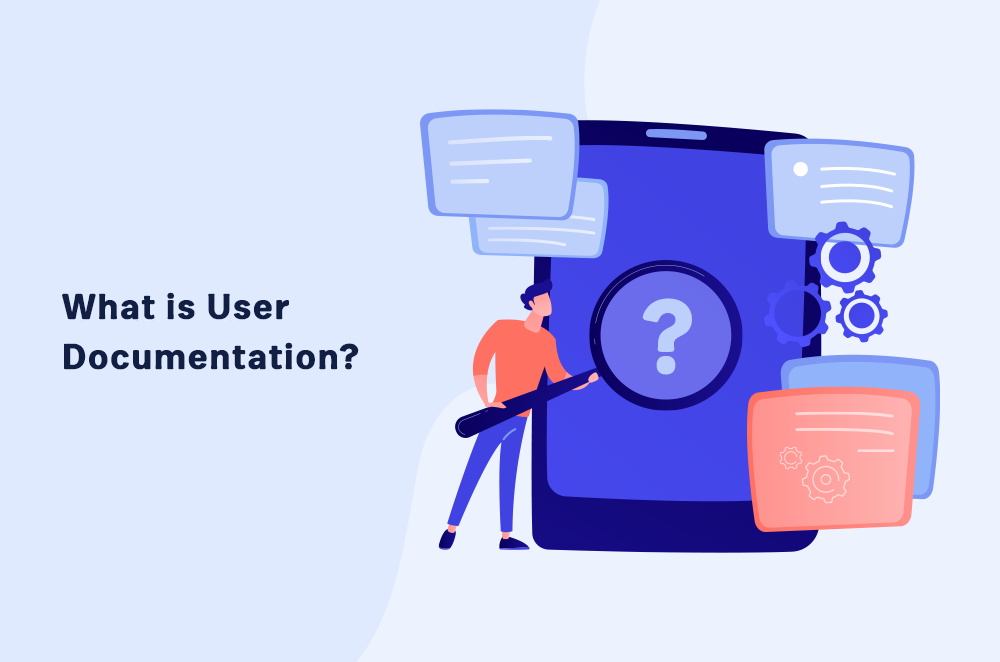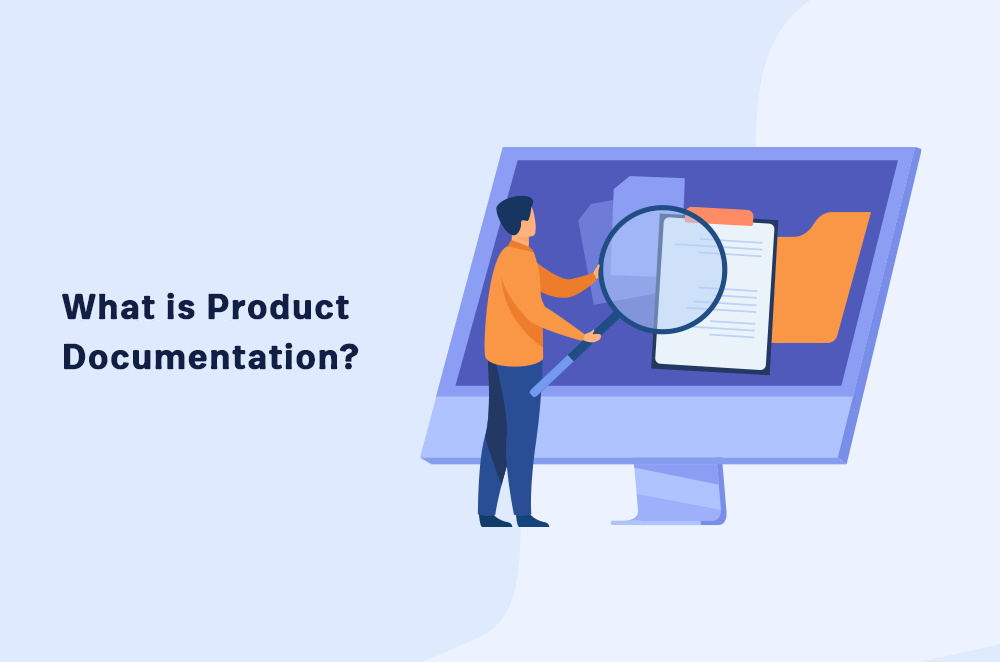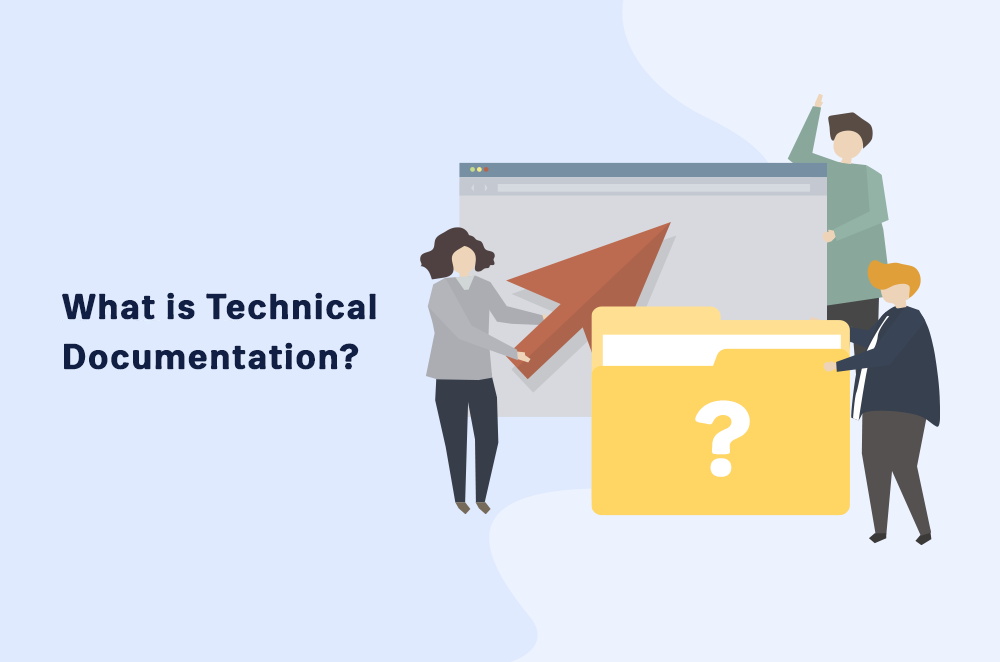Home »
What is Documentation?
Documentation is a communicable representation of a system, software, or process. It typically provides detailed information about how to use the system, software, or process. You can create it on paper or online, and it can take various formats.
Today, documentation comprises textual information and uses multimedia resources such as images, videos, and audio recordings to facilitate the readers.

What is User Documentation?

Best Process Documentation Software 2024: Reviews and Pricing

What is Knowledge Base Documentation?

What is Product Documentation?

What is Technical Documentation?

4 Best Documentation Formatting Examples

What is Software Documentation?

What is Process Documentation?
What is the Purpose of Documentation?
Documentation assists various sectors and industries for different purposes. The following are some of the significant purposes of documentation:
- It aims to explain various features of a product to the users. Users can learn about the features and functions of a product by reading its documentation.
- Organizations also use documentation to communicate instructions, policies, and procedures to their employees. By reading the documentation, employees can learn about the dos and don’ts in an organization.
- Documentation is also used for training purposes. It helps newbies get familiar with using different products and processes.
- Users use it as a reference tool. Employees use documentation to find solutions to various problems.
- Business and software companies use documentation to track the progress of a project. By reading the documentation, they can know about the various stages of the project and what needs to be done next.
- It is also used for marketing purposes. A product’s documentation can highlight its features and USPs (Unique Selling Points) to attract customers.
Documentation Examples
There are various types of documentation depending on your purpose. The following are some examples of documentation:
Product Documentation
Product documentation offers instructions about the use of a product. It enables the users to understand the features and functions of a product. It also includes installation, configuration, and troubleshooting instructions. Product development teams create product documentation. They work with subject matter experts to ensure the documentation is accurate and up-to-date.
Product documentation describes steps to be followed to use the product effectively. It is vital for the success of any product in the market. It also enables companies to reduce the number of customer support queries. End users can better understand the product by reading these documents.
Product documentation is of the following two types:
User Documentation
User documentation is created to guide users about the use of a product. It includes information such as installing the product, using its various features, etc. Examples of this type of documentation include user guides, tutorials, user manuals, etc.
System Documentation
This type of product document offers the users an understanding of the system. It includes information such as how the system works, what are its various components, etc. This type of documentation is helpful for system administrators. They can better understand the working of the system by reading this document.
API References
The API reference is documentation that provides information about the programming interface of the software. It is a reference manual for developers that includes information such as how to use the various features of the API, what are the parameters that need to be passed, etc. Developers use this document to understand how to use an API in their applications.
It includes code examples that developers can follow to use the API. API document writers need to consider business values and audience needs while writing this document. Developers host these documents on websites or API-focused portals to make them easily accessible to other developers.
Process Documentation
Process documentation is created to document a process. It includes information such as the steps involved in the process, the inputs and outputs of each step, etc. Process documentation helps organizations to standardize their processes.
By following the process documentation, businesses can ensure that the processes are carried out consistently. It is also helpful for new employees. They can learn about the various processes of an organization by reading this document. It Includes all the instructions stakeholders need to know to complete a task. It is a vital component that enables new hires to comprehend an organization’s processes quickly. It ensures that everyone involved in the development process knows their roles and responsibilities.
Business Proposals
A business proposal is a document that comprises the details of a business offer. It includes information such as the products or services offered, the cost of the products or services, etc. Companies use business proposals to persuade potential customers to do business with a company. They are also used to convince investors to provide funding for a business.
A well-written business proposal can make a big difference in the success of a business. Business proposals offer a solution to a potential customer’s problem. They should be well researched and relevant to the needs of the customer. The proposal should also be convincing enough to make the customer want to do business with the company. You can include testimonials, case studies, and other relevant information in the business proposal to make it more convincing.
Marketing Requirements Documentation
Marketing is a crucial aspect of the progress and sustainability of any business in the industry. Without marketing, companies will not be able to create awareness about their products or services among the target audience. Marketing requirements documentation is a document that captures the various marketing requirements of a business.
The product manager creates this document to communicate a product’s marketing requirements to the development team. It is a strategic document that guides the marketing team in their efforts to promote a product. The marketing requirement document must answer the following questions:
- Who is the target market for the product?
- What are the features of the product?
- How does the product solve the problem of the target market?
- What are the marketing objectives of the product?
The answers to these questions help the marketing team to develop an effective marketing strategy for the product. They can use this document to create marketing collateral, such as product brochures and website content.
Newsletters
A newsletter is a type of report that contains information about recent events or developments related to a particular subject. Companies use it to update their employees, customers, or shareholders about the latest happenings in the company. Organizations also use newsletters to promote new products or services, share company news, announce events, etc. It is an effective way to keep people informed about the company’s activities.
Newsletters follow a specific format and include the company’s logo, name, and contact information. They also contain a table of contents that helps readers quickly find the information they are looking for. The newsletter should be well designed and easy to read. It includes textual material as well as visual elements such as images, graphs, and charts.
Following are some key aspects a writer must know to write an effective newsletter:
- Purpose of the newsletter
- Target audience
- Type of information to include
- Design and layout
- Editing and proofreading
- Distribution of the newsletter
Project documentation
Project documentation is a type of document that contains essential information about a project. It includes various aspects such as project scope, objectives, timeline, risks, budget, etc. It outlines the project’s feasibility, charter, design, requirements, working plan, and various metrics. Project documentation enables project managers to track the progress of the project and ensure that it is completed on time and within the budget. It also helps to communicate the project requirements to the team members and other stakeholders.
A project documentation writer must have a good understanding of the project to write an effective document. They should also have sufficient data to support the claims made in the document. A well-written document can help project managers to get the necessary approvals and funding for the project. Project leaders can track the project’s progress and make necessary changes to ensure its successful completion.
How to Create Documentation?
Here are the steps to create good documentation:
Decide The Type of Documentation You Want to Write
The first step is to decide the type of documentation you want to write. There are various types of documentation, such as user manuals, how-to guides, product specifications, design documents, etc. Choose the type of document that best suits your needs. Determine the following aspects to decide the type of documentation:
- Figure out the purpose of the documentation.
- Is it for internal use or external distribution?
- Will it be used for marketing purposes or for training new employees?
- Determine the intended audience.
These aspects will help you write the document in a language and style appropriate for the audience.
Plan Your Documentation
Planning is necessary to create a clear and consistent document. Without planning, it would be hard to determine the purpose, target audience, and scope of the document. Planning also helps keep the project on track and avoid potential problems.
While planning your document, you need to collect the required data and information. It includes the data about the product, company, or project. You also need to gather data from various sources such as customer feedback, surveys, etc. Once you have all the required data, you can start writing the document.
Create a Rough Draft
The next step is to create a rough draft of the document. Add the format of the document, such as headings, subheadings, bullet points, etc. You can create the draft on a single page or multiple pages. Add short notes for each section of the document. These notes will help you to write the final version of the document. It will also ensure you don’t forget to include any important information. Following are some other benefits of writing a draft:
- It enables you to organize your thoughts in a better way.
- You can make changes to the draft without affecting the final document.
- It helps to get feedback from others about the document.
- Writing a draft saves time as you can avoid rewriting the entire document.
- Writing a draft also helps to identify any errors or gaps in the document. You can revise the draft and add more information to make the document more comprehensive.
Writing The Final Version
Once you have created the draft, you can start writing the final version of the document on MS Word, Google docs, or other platforms. Grab the draft and add more details and explanations to write the full version. You need to write a clear and consistent document. Don’t add jargon. Jargons are the words or phrases specific to a particular field or industry. If you want to include jargon, make sure to explain its meanings.
Add visuals, such as images, charts, and diagrams to make the document more appealing. Visually make the document more interesting to read and help the readers to understand the concepts easily.
Editing and Proofreading
After writing the final version, proofread and edit the document to remove any errors. It is necessary to edit the document as it helps to improve its quality. Edit the document for grammar, spelling, and punctuation errors. You can also edit it for clarity and conciseness.
It is also important to check the document for any factual errors. Make sure that all the information in the document is accurate and up-to-date. You can also ask someone else to proofread the document. You can get someone else to proofread the document. It enables you to identify any errors that you might have missed.
Publishing The Documentation
After editing and proofreading the document, you can publish it. You can upload your document on a web page, wiki page, cloud, or social media. You can distribute the document in the form of a PDF document or an eBook. You can also print the document and distribute it among the target audience.
When publishing the document, you need to ensure that it is accessible to the target audience. You can also add a search feature to make it easier for the readers to find the information they are looking for.
Updating the Document
Creating a document doesn’t complete the documentation process. You need to update the document regularly to provide the latest information to the readers. You should update the document whenever there is a change in the product, company, or project. Updating the document also helps to keep it relevant and accurate.
It is vital to install a process for updating the document. You can appoint someone responsible for maintaining and updating the document. You can also set up a review process to ensure the document is regularly updated. Feedback from the readers allows you to identify the areas where the document needs an update.
Documentation Benefits
The following are some benefits of documentation:
Training Tool for Employees
Documentation is a valuable training tool for new and existing employees. It helps them to understand the company’s policies and procedures. Employees can learn about the processes and procedures by reading the document.
Employees spend about two and a half hours searching for the desired data or information. Documentation provides a convenient way for employees to access the information they need. It is helpful for new employees as they can get an overview of the company’s operations. It also enables you to smoothly run a project even if a key team member is unavailable.
Improves Customer Satisfaction
Documentation helps you to provide a better customer experience. By creating documentation, you can provide the latest information to the users. It also allows you to address their queries and concerns.
Some documentation offers step-by-step instructions that help the users understand how a product or service works. It also helps to troubleshoot problems. Good documentation can improve customer satisfaction by providing the information they need.
Improves Productivity
Project development teams start a product development project to create a successful product. However, without documentation, it is difficult for a project management team to assess whether the project is on track. Documentation helps you track the project’s progress and identify any areas where the team is lagging.
It also helps you to assess the impact of changes made during the development process. Documentation also allows you to monitor the project milestones and deliverables. By keeping track of the project progress, you can ensure that the project is completed on time and within the budget. It saves development teams from duplicate work and helps to improve productivity.
Maintaining the Quality of the Product
Documentation is essential for maintaining the quality of the product. By documenting the requirements, you can ensure that the product meets the users’ needs. Documentation also helps to identify the areas where the quality needs to be improved.
It isn’t easy to assess the quality of a product without documentation. You can evaluate the product against the defined criteria by documenting the test cases. Documentation also helps to track the defects and bugs. By fixing the defects, you can improve the quality of the product.
Promote Collaboration
Communication and collaboration among various departments are essential for the success of a product development project. Documentation helps to promote collaboration among the team members. It also helps to reduce misunderstandings.
By sharing the document, you can ensure everyone is on the same page. Documenting the requirements ensures that everyone understands the goal of the project. Documentation also helps to identify the tasks that need to be completed by each team member.
Conclusion
Delivering knowledge and instructions to end users is crucial for organizations. With documentation, they can communicate the instructions and procedures to the employees, clients, and customers.
Documentation is essential for customer support, training new employees, and maintaining product quality. Good documentation can improve customer satisfaction and productivity. It also helps to promote collaboration among the team members.
Though creating documentation is a time-consuming process, the efforts are worth it in the long run. You can create a compelling document by following a simple procedure. So, if your company hasn’t started documenting, start now and reap the benefits.
FAQs
What are documentation and examples?
Documentation refers to information that describes a system, product, or process. Organizations provide documentation to end users to help them use the systems and products effectively.
Examples of documentation include project documentation, requirements documentation, user manuals, white paper, tutorials, etc.
What is the main purpose of documentation?
The main purpose of documentation is to deliver knowledge and instructions to end users. It helps them to understand how to use the systems and products effectively. It also enables users to learn about using web apps, cloud services, and other technologies.